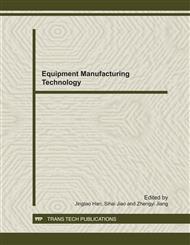p.24
p.29
p.35
p.39
p.43
p.47
p.51
p.55
p.61
Application of Electronic Nose in Tea Quality Recognition
Abstract:
The current study uses the electronic nose FOX 4000 to inspect Xinyang Maojian tea in three quality levels. Principal component analysis (PCA) and statistical quality control (SQC) are adopted to analyze and recognize the data. PCA shows that there is a certain difference in the odor of the tea samples in the three quality levels. PCA can evidently distinguish three kinds of samples. SQC analysis shows that X800 and X600 are located outside the controllable range, indicating that they differ from X1200 in odor. This result is consistent with the PCA result. The study shows that electronic nose technology is expected to be applied widely in the rapid detection of tea.
Info:
Periodical:
Pages:
43-46
Citation:
Online since:
December 2011
Authors:
Price:
Сopyright:
© 2012 Trans Tech Publications Ltd. All Rights Reserved
Share:
Citation:


